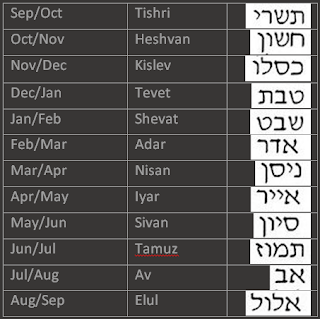Learning Hebrew: Part 4
With the Jewish New Year around the corner, I thought it
would be interesting to do a blog post on how to say the months of the year,
and also the days of the week, in Hebrew.
Months of the Year
There are two very distinct differences between the Jewish
and Gregorian calendars. The first being that the Near Year starts in the
middle of September as opposed to the first of January, respectively. In
Israel, the New Year celebration is called Rosh Hashanah.
The second major difference is that the beginning of the
Jewish months start in the middle of the Gregorian months. The image below shows
what the Jewish months are and how to spell them in Hebrew.
Days of the Week
Like the months of the year, the days of the week in Israel
also differ in their start times from what I am used to in Canada. Here, the
beginning of the week starts on a Sunday, meaning that Friday and Saturday are
the days of the weekend. Saturday, known as Shabbat, is considered a religious
time devoted to being with your family. Something else that differs from
Canadian culture is that the start of the day in Israel begins at sundown, so
Friday evening is the actual start of Shabbat.
The days of the week literally translate to 1st
day, 2nd day, and so forth until Shabbat. In fact, you can see some
similarity between the days of the week and the Hebrew numbers that I wrote
about in Learning Hebrew Part 2. Take for example Friday (Shishi), the 6th
day, which closely resembles how to say the number 6 (Shesh).


Comments
Post a Comment